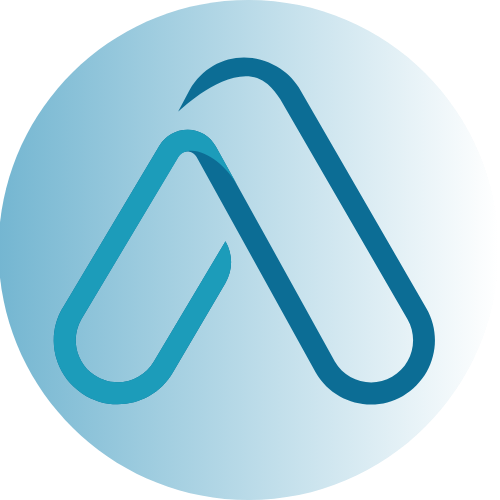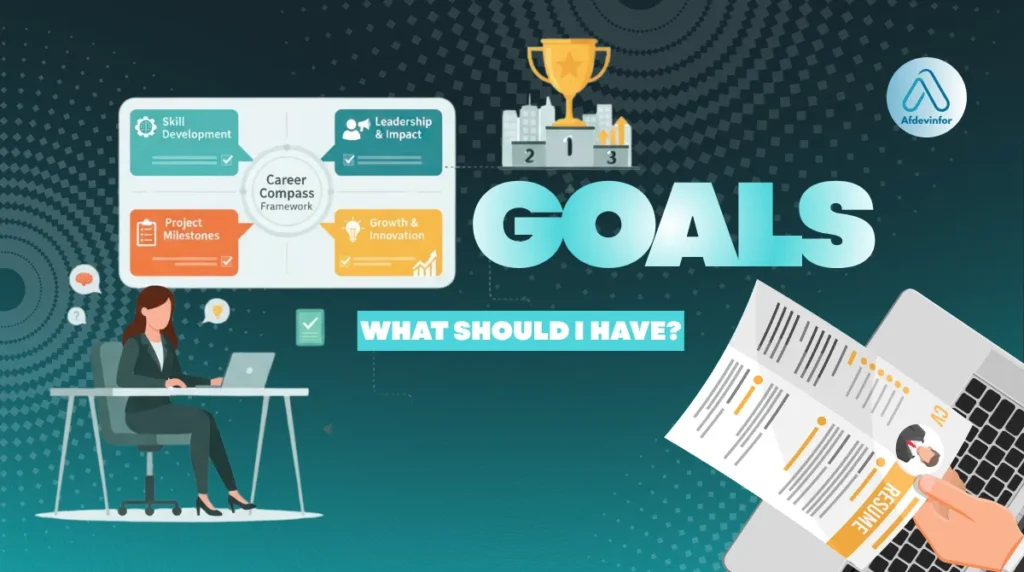It’s that time of year again. Performance review season is looming, and the dreaded ‘What are your goals for next quarter?’ question lands in your inbox. If your first instinct is to find a generic list online, you’re not alone, and you’re already on the path to setting forgettable goals. After over a decade in the tech industry, I’ve seen countless well-intentioned objectives get written down in January only to be completely forgotten by March.
The core problem is that most people don’t know what goals should i have for work that are truly meaningful to them. This guide is different. I’m not just going to give you a list; I’m going to give you a personalized system to choose, frame, and achieve goals that will actually accelerate your career.
Here’s the practical, step-by-step approach you will learn in this article:
- Common Pitfalls: How to avoid the mistakes that derail most professional goals.
- Self-Assessment: A framework to uncover where you can make the most impact.
- Goal-Setting Frameworks: Simple tools like SMART and OKRs to give your goals structure and clarity.
- Tailored Goal Examples: Actionable ideas for tech and professional roles, categorized by ambition.
1. Why most work goals fail (and how to set yours up for success)
It’s performance review season, and the dreaded ‘What are your goals for next quarter?’ question lands in your inbox. If your first instinct is to find a generic list online, you’re not alone, and you’re already on the path to setting forgettable goals. I’ve learned that the problem isn’t a lack of ambition; it’s a lack of a personalized strategy.
This article moves beyond generic lists to provide a system for choosing and achieving goals that genuinely matter to your career. We’ll explore a practical, step-by-step approach to self-assessment, applying proven frameworks, using tailored examples, and avoiding common pitfalls.
2. A self-assessment to find your most impactful goals
Before you can even think about specific objectives, you need to do some diagnostic work. This self-assessment is the foundational step that most people skip, which is why their goals often feel disconnected and uninspiring. I’ve designed this section as a ‘diagnostic toolkit’ to help you pinpoint exactly where to focus your energy for maximum career impact.
The best goals aren’t found on a list; they’re uncovered through self-reflection.
2.1. Step 1: Analyze your role and skill gaps
The first step is to take an honest inventory of your current position and capabilities. This isn’t about being self-critical; it’s about identifying opportunities. By understanding your strengths and weaknesses, you can set effective performance improvement goals that address real needs. Here are some questions to guide your analysis:
- What task in my current workflow takes the most time? What skill could cut that time in half?
- Looking at my job description, which responsibilities do I excel at and which do I avoid?
- What feedback have I consistently received from my manager or peers in the last six months?
- What new technology in my field (e.g., a new framework, AI tool) am I curious about but haven’t had time to learn?
- If I were to leave my job tomorrow, what skill on my resume would get me hired, and what skill is missing?
2.2. Step 2: Align with your company’s mission and culture
Goals that are visible and valuable to your organization are far more likely to get the support, resources, and recognition they need to succeed. Setting goals in a vacuum is like rowing a boat in a different direction from the rest of the crew. You might be working hard, but you’re not helping the team move forward. Take time to understand what your company is trying to achieve on a larger scale.
Pro-Tip
Look at your company’s latest all-hands presentation or quarterly financial report. The CEO’s top priorities are a goldmine for impactful goal ideas that show you’re thinking strategically about the business.
2.3. Step 3: Connect with your personal values and career vision
This is the human side of goal-setting that truly fuels motivation. A goal that doesn’t connect with your long-term ambitions will always feel like a chore. Think beyond your current title and consider what energizes you. Do you want to manage people, become a deep technical expert, or transition to a new domain entirely? Aligning your short-term objectives with a long-term vision transforms them from quarterly tasks into meaningful career advancement strategies and professional development goals.
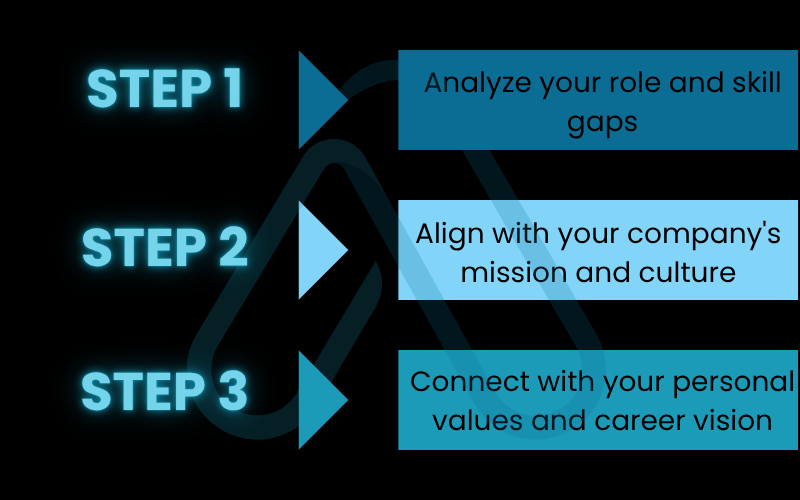
3. The framework: How to create achievable professional goals
A great idea for a goal is useless without a structure to make it actionable. To create achievable professional goals, I rely on a couple of tried-and-true frameworks. These aren’t rigid rules but rather tools to bring clarity and focus to your ambitions. They help transform a vague aspiration into a concrete plan, which is essential for setting achievable work objectives.
3.1. The S.M.A.R.T. method for clear and measurable objectives
The SMART method is a powerful tool for adding precision to your goals. It forces you to define exactly what you want to accomplish and how you’ll know when you’ve succeeded. The ‘R’ for Relevant is especially critical; it should always tie directly back to the insights you gained from your self-assessment in the previous section. Here’s how it works:
- Specific: What exactly do you want to achieve? Who is involved? Where will it be done?
- Measurable: How will you track progress and measure the outcome?
- Achievable: Is the goal realistic given your current resources and constraints?
- Relevant: Does this goal align with your role, your team’s objectives, and your career vision?
- Time-bound: What is the deadline for achieving this goal?
Here’s a practical example showing the difference:
| Vague Goal | SMART Goal |
|---|---|
| Get better at coding. | Complete the ‘Advanced Python for Data Science’ course on Coursera and apply the learnings to refactor two legacy modules in our main app by the end of Q3, aiming for a 15% reduction in code complexity as measured by SonarQube. |
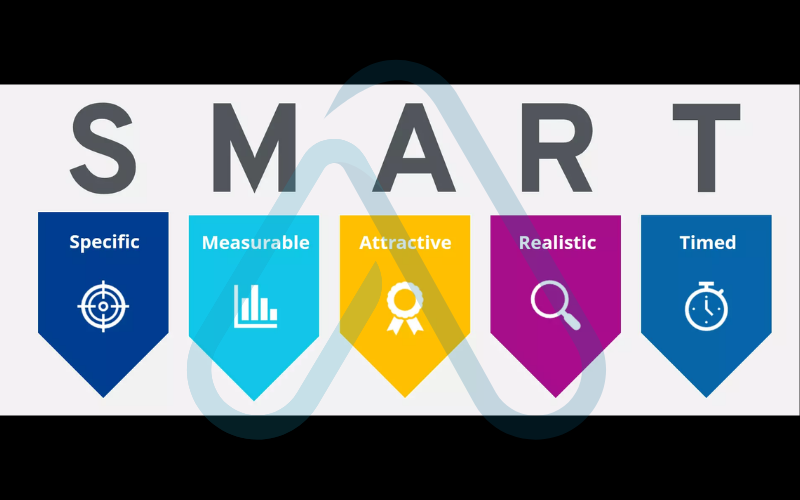
3.2. Adding context: Using O.K.R.s to connect to the big picture
For those looking to demonstrate more strategic thinking, I recommend layering Objectives and Key Results (OKRs) on top of the SMART framework. OKRs are great for setting more ambitious, qualitative goals that connect your individual work to the company’s broader mission. It’s an advanced technique that I’ve seen impress leadership time and again. The structure is simple:
- Objective (The ‘What’): A memorable, aspirational, and qualitative description of what you want to achieve.
- Key Results (The ‘How’): 2-4 measurable outcomes that show you have achieved your objective. If you achieve your key results, you have definitively achieved the objective.
For example, here is a personal OKR:
- Objective: Become the team’s go-to expert on our new data visualization library.
- Key Result 1: Build and deploy three new dashboards for the marketing team using the library.
- Key Result 2: Host one lunch-and-learn session for the engineering team on best practices.
- Key Result 3: Write one internal wiki article documenting a solution to a common implementation challenge.
4. Actionable examples of what goals should I have for work
Now that you have a framework for self-assessment and goal-structuring, let’s get to the actionable examples users are often searching for. I’ve categorized these examples of work goals for employees to align with the different ambitions you might have uncovered during your self-reflection. Use these as a starting point and customize them using the SMART method.
4.1. Goals for professional development and upskilling
These goals are focused on acquiring new hard and soft skills to increase your value and stay relevant in a fast-changing industry. They are the foundation of your long-term professional development goals.
- Master a specific cloud platform service: Earn the AWS Certified Developer – Associate certification within the next six months by dedicating five hours per week to study and completing two practice exams.
- Learn a new project management methodology: Complete an Agile Scrum Master certification and volunteer to facilitate sprint planning for our next internal project.
- Improve public speaking skills: Prepare and present the technical demo at two internal team meetings this quarter to build confidence and practice conveying complex information clearly.
4.2. Goals for performance improvement and efficiency
These goals are about optimizing how you perform your current job responsibilities. They demonstrate a commitment to quality, productivity, and continuous improvement.
- Reduce bug report resolution time: Decrease my average ticket resolution time by 10% this quarter by creating three new reusable documentation snippets for common issues.
- Automate a repetitive task: Write a Python script to automate the generation of the weekly marketing analytics report, saving an estimated two hours of manual work per week.
- Master primary software tools: Complete an advanced course for my primary IDE and commit to using keyboard shortcuts to increase daily coding output by 5% by the end of the month.
4.3. Goals for career advancement and leadership
If your sights are set on a promotion or leadership role, your goals need to demonstrate that potential. These goals focus on mentorship, ownership, and strategic contribution, which are key components of effective career advancement strategies.
- Mentor a junior team member: Schedule bi-weekly check-ins with a new junior developer to help them navigate our codebase and successfully ship their first feature within their first 90 days.
- Take ownership of a project feature: Lead the development of a small, low-risk feature from technical design to final deployment, providing a weekly status update to all stakeholders.
- Develop thought leadership: Write and publish one article on the company’s official engineering blog detailing a recent technical challenge our team solved.
From my experience, nothing gets you noticed faster than taking on the work no one else wants to do. I once saw a mid-level engineer get promoted primarily because she took ownership of our team’s messy, outdated documentation. She set a goal to rewrite and organize it, and in doing so, became the expert on our entire system. It was a non-glamorous task that had a massive impact.
4.4. Goals for wellness and work-life integration
In today’s demanding work environment, goals focused on preventing burnout are not ‘soft’. They are essential maintenance for long-term, high-quality performance. These goals show maturity and a commitment to sustainable success.
- Protect personal time: Commit to taking a full hour for lunch away from my desk at least three times per week to decompress and recharge.
- Utilize paid time off: Schedule and use all of my remaining PTO for the year, ensuring at least one break is a full consecutive week off.
- Establish digital boundaries: Set a hard cut-off time of 7:00 PM for checking work email and Slack on weekdays to improve work-life separation.
5. Common mistakes and how to avoid goal-setting pitfalls
Even with the best intentions, it’s easy to stumble when setting goals. I’ve made all of these mistakes myself over the years. Here’s a quick troubleshooting guide to help you avoid the most common pitfalls and stay on track.
5.1. Mistake #1: Goal fatigue from setting too many objectives
Having a list of ten goals is a surefire recipe for achieving none of them. When your focus is split too many ways, you make little meaningful progress on anything. The key is ruthless prioritization. Think of it like juggling; it’s much easier to keep three balls in the air than ten.
The Rule of 3:
If you have more than three top-priority goals at once, you have no priorities at all. Focus on 1-3 high-impact goals per quarter for the best results.
5.2. Mistake #2: The ‘set it and forget it’ approach
Goal setting is not a one-time event you do during your performance review and then ignore. Your goals should be living documents that you review regularly. This keeps them top-of-mind and allows you to track progress and make adjustments.
I recommend a quick personal review at the end of each week. For tracking, you can use a simple spreadsheet, a project management app like Trello or Asana, or a dedicated section in a notebook. To help you get started, you can make a copy of my simple Google Sheets goal-tracking template here (link to be inserted).
5.3. Mistake #3: How to pivot when a goal becomes obsolete
Business priorities shift, projects get canceled, and teams get restructured. A goal that was critical last month might be irrelevant today. It’s crucial to recognize that changing a goal isn’t a sign of failure; it’s a sign of adaptability.
For instance, if the project your goal was tied to gets de-prioritized, don’t keep working on it! Proactively go to your manager with a revised goal that aligns with the new company direction. Pivoting isn’t failing. Tt’s agile career management.
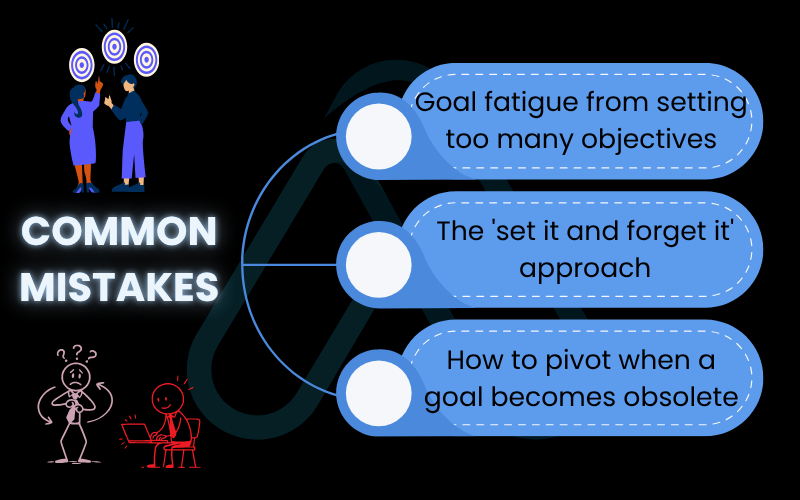
6. FAQs about what goals should i have for work
Here are some quick answers to common questions I get about setting effective work goals.
How do work goals affect career growth?
They are the engine of career growth; consistently achieving them signals to leadership that you are ready for promotion.
What are some good short-term professional goals?
Good examples include completing a certification, automating a task, onboarding a new teammate, or leading a team presentation.
How often should I review my work goals?
Review them personally weekly, assess their relevance monthly or quarterly, and align with your manager during regular 1-on-1s.
Should my work goals include soft skills?
Yes, absolutely; soft skills are often what separate senior from junior contributors, and they can be made into SMART goals.
7. Final thoughts
Setting the right work goals is less about finding a perfect, pre-made list and more about engaging in a thoughtful process of self-discovery. By understanding your unique context, applying a clear framework, and consistently reviewing your progress, you can transform goal-setting from a corporate chore into a powerful tool for personal and professional growth. Stop searching for the perfect goal and start the process of uncovering your own.
Here are the most critical takeaways to remember:
- Personalize Before You Prioritize: The most impactful goals come from a deep understanding of your skills, company needs, and personal career vision.
- Structure is Your Friend: Use frameworks like SMART and OKRs to turn vague ambitions into a concrete, actionable plan.
- Start Small and Specific: Don’t try to boil the ocean. Focus on 1-3 high-impact goals per quarter to ensure you make meaningful progress.
- Review and Adapt: Treat your goals as living documents. Regular reviews and a willingness to pivot are signs of strength, not failure.
Now that you have the tools to set meaningful goals, it’s time to put them into practice. For more in-depth guides to accelerate your professional journey, explore our Career Development categories here on Afdevinfo.
Glossary of key terms
| Abbreviation | Full Term | Meaning |
|---|---|---|
| SMART | Specific, Measurable, Achievable, Relevant, Time-bound | A framework for setting clear and actionable goals. |
| OKR | Objectives and Key Results | A goal-setting methodology for setting ambitious goals with measurable results. |
| PTO | Paid Time Off | Compensated leave time provided by an employer. |
| IDE | Integrated Development Environment | A software application that provides comprehensive facilities to computer programmers for software development. |
| Agile Scrum | Scrum framework within Agile methodology | A project management framework that helps teams work together to develop, deliver, and sustain complex products. |
| AWS | Amazon Web Services | A comprehensive, evolving cloud computing platform provided by Amazon. |
